I first decided to buy an ATV a few years after I sold my truck. Of course one of the biggest hindrances to buying an ATV was figuring out how to haul it. Unless you live on some decent land where you can drive your ATV, it will not do much good for you unless you have a way to haul it to where you want to ride it. For me, this meant buying a truck and potentially a trailer. I thought it would be great to start out if I did not need a trailer and could fit an ATV in the bed of a new truck, but then, my wife wanted an ATV even more than me, and then the kids want their own. In the end, I needed some ATV dimensions. That, obviously, is the first step to figuring out what you need to haul an ATV, so I did some digging.
ATV sizes are not uniform in the least. That being said, there are some definite trends. Obviously, the bigger engine size you get, the bigger the ATV will be. Children or youth ATVs are generally going to run fifty to sixty inches long and thirty to forty inches wide. Smaller ATVs are generally going to be sixty-five to seventy-five inches long and forty to forty-three inches wide. Your standard and most popular sized ATVs are generally seventy to ninety inches long and forty-two to forty-eight inches wide. Finally, your larger ATVs are going to be a little larger at seventy-four to ninety-four inches long and 46-48 inches wide.
Before I get into the more specific dimensions for each class of ATVs and UTVs, there are a couple of key trends I noticed in analyzing the dimensions of hundreds of different ATVs. First, the sport models made by each manufacturer are typically a little smaller than the utility models. Second, the longest machines were not always the widest so it is not just a matter of finding the biggest or smallest ATV. Third, 48 inches wide seems to be the golden number where you can pretty confidently plan on that being your maximum width on any ATV you find.
The 50cc ATV is the smallest sized ATV and is typically used for smaller children. The smallest 50cc ATV I came across was the Polaris Predator 50. These small machines have equal dimensions at only 31.5 inches wide and 48 inches long. If you are just going by width, however, the narrowest 50cc ATV is actually the Suzuki Quadsport Z50, which is only 29.9 inches wide despite being 50 inches long. The largest 50cc machine I came across is more difficult to determine because the longest was not the widest. The longest machine is the Yamaha Raptor 50 at 60.5 inches long, but only 32.5 inches wide. The widest 50cc ATV was the Kawasaki KFX 50 at 34.7 inches wide and 55.1 inches long.
Overall, the 50cc machines I reviewed ranged from 48 to 60.5 inches long and 29.9 to 34.7 inches wide.
The smallest 50cc ATV I came across was the Polaris Predator 50. These small machines have equal dimensions at only 31.5 inches wide and 48 inches long. If you are just going by width, however, the narrowest 50cc ATV is actually the Suzuki Quadsport Z50, which is only 29.9 inches wide despite being 50 inches long. The largest 50cc machine I came across is more difficult to determine because the longest was not the widest. The longest machine is the Yamaha Raptor 50 at 60.5 inches long, but only 32.5 inches wide. The widest 50cc ATV was the Kawasaki KFX 50 at 34.7 inches wide and 55.1 inches long.
Overall, the 50cc machines I reviewed ranged from 48 to 60.5 inches long and 29.9 to 34.7 inches wide.
70cc ATV’s are far less popular than the 50cc or 90cc models, but they can be found. The most popular 70cc model is the Can-Am DS70, which is 48 inches long by 35.6 inches wide. More 70cc models can be found that are typically Chinese imports and lesser known brands such as the Raceway XL 70, which is 44 inches long and 26 inches wide.
90cc ATVs are one of the more popular-sized youth ATVs. Probably the smallest 90cc ATVs are going to the Sport DVX 90 or Utility Youth 90 from Arctic Cat, both of which are 57.8 inches long by 34.5 inches wide, or the Kawasaki KFX 90, which is 56.1 inches long by 35.6 inches wide. The KFX 90 is going to be the shortest machine at 56.1 inches long. The least wide machine, just barely, is the Suzuki Quadsport Z90, which is 34.4 inches wide. The longest 90cc ATV I found was the Polaris Sportsman 90 at 61.5 inches long by 38.5 inches wide. On the other hand, the widest, by a decent margin, was the Yamaha Raptor 90, which is 40.2 inches wide. Overall, the 90cc ATVs I reviewed ranged from 56.1 to 61.5 inches long and 34.4 to 40.2 inches wide.
200cc ATVSThe 200cc ATV is another size that is not as popular in the United States. Most of the models you are going to find are lesser-known brands and/or imports from China. There are a handful of popular models; however, including offerings from Polaris and Yamaha. The biggest 200cc ATV is the Bombardier Rally 200, which is 79.9 inches long and 41.5 inches wide. The shortest model is going to be one of the two Polaris models, the Phoenix 200 or the Saw Tooth, both of which are 65 inches long. The least wide model is the Yamaha Blaster, which is 40.7 inches wide. Overall, the vast majority of machines at 200cc are going to 65-70 inches long, with the Bombardier Rally being the outlier at 79.9 inches long. The width is going to be between 40 and 42 inches wide on most models.
There are a handful of popular models; however, including offerings from Polaris and Yamaha. The biggest 200cc ATV is the Bombardier Rally 200, which is 79.9 inches long and 41.5 inches wide. The shortest model is going to be one of the two Polaris models, the Phoenix 200 or the Saw Tooth, both of which are 65 inches long. The least wide model is the Yamaha Blaster, which is 40.7 inches wide. Overall, the vast majority of machines at 200cc are going to 65-70 inches long, with the Bombardier Rally being the outlier at 79.9 inches long. The width is going to be between 40 and 42 inches wide on most models.
At the 250cc size, we start getting back into the more popular offerings. The biggest 250cc I found was probably the Yamaha Big Bear 250, which was 75.4 inches long, but only 40.9 inches wide. The widest machine would be the Arctic Cat DVX 250 or Honda TRX 250EX, both of which are 41.8 inches wide. The least wide model is the Kawasaki Bayou 250, which is 40.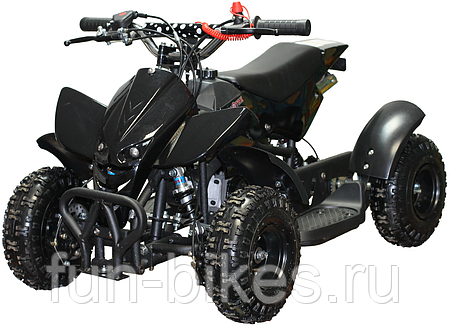 2 inches wide. The shortest machine I found was the Arctic Cat DVX 250, which is only 66.3 inches long. Overall, the 250cc ATVs are likely to range from 66 to 76 inches long and 40-42 inches wide on most models.
2 inches wide. The shortest machine I found was the Arctic Cat DVX 250, which is only 66.3 inches long. Overall, the 250cc ATVs are likely to range from 66 to 76 inches long and 40-42 inches wide on most models.
I have only seen a couple 300cc ATVs from the more popular ATV brands. Polaris makes the Hawkeye, which is 72 inches long and 42 inches wide. Arctic Cat also makes a 300cc machine that is 73.6 inches long and 41.4 inches wide. Given that, I think it is safe to say you can expect a 300cc ATV to fall between 70 and 75 inches long and 40 to 42 inches wide.
The 350cc class is dominated by Yamaha from what I was able to find, but there are a few other options as well. The biggest option, in both length and width, is the Arctic Cat 350. That machine is 83.3 inches long and 44.5 inches wide. The shortest model is the Yamaha Raptor 350, which is 69.7 inches long. The least wide 350cc ATV is the Yamaha Wolverine 350, which is 41. 9 inches wide. The 350cc ATVs range in length from 69 to 84 inches, but the majority seem to be around the 76-79 inch range. The width range is much smaller, ranging from 41 to almost 45 inches.
9 inches wide. The 350cc ATVs range in length from 69 to 84 inches, but the majority seem to be around the 76-79 inch range. The width range is much smaller, ranging from 41 to almost 45 inches.
400cc is where we start getting into the normal range of adult ATVs and we see more options to compare. At 400cc, the Arctic Cat 400, which is the utility model for Arctic Cat, is by far the biggest ATV. It is 84.3 inches long and 47.8 inches wide. By comparison, the DVX 400 sport model from Arctic Cat is the shortest ATV of this class at just 72 inches long. The least wide model is the 41.5 inch-wide Bombardier Outlander 400 HO. Overall, the 400cc ATVs range from 72 inches to 84.3 inches long and 41.5 inches to 47.8 inches wide. The models I reviewed dotted pretty much everywhere in that range without any real consensus.
At 450cc, we get even more options from the likes of Honda, Kawasaki, Polaris, Yamaha and Can-Am.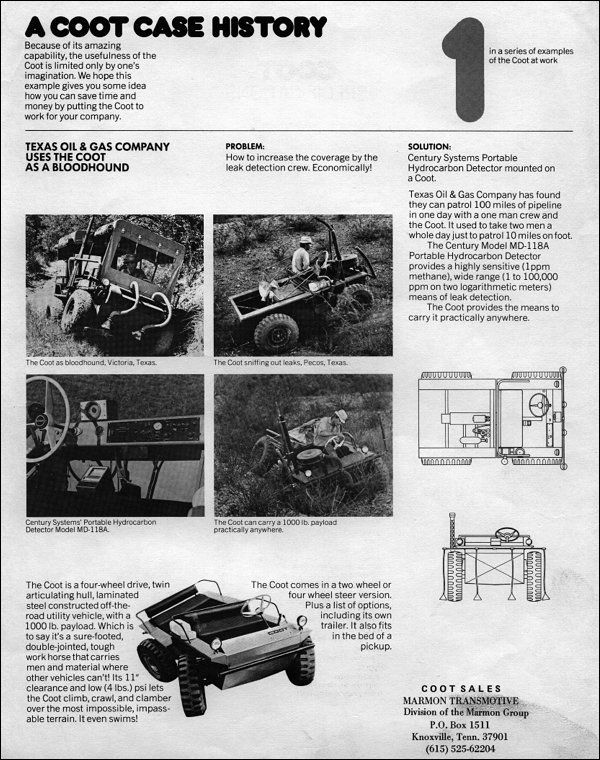 The largest 450 cc ATV I found was the Polaris Sportsman 450, which came in at 83 inches long and 48 inches wide. The shortest model was the Kawasaki KFX 450R at 71.1 inches long. The least wide ATV was the Yamaha Wolverine 450, which is only 41.9 inches wide. As such, the 450cc ATVs range from 71 to 83 inches in length and 41 to 48 inches in width. Most of the models I saw fell in either the 71 to 73 inches or 77 to 83 inches ranges in length, with almost none in the 74-76 inches long range. In width, the 450cc ATVs ranged from 41 to 48 inches, with most sitting around 46 inches wide.
The largest 450 cc ATV I found was the Polaris Sportsman 450, which came in at 83 inches long and 48 inches wide. The shortest model was the Kawasaki KFX 450R at 71.1 inches long. The least wide ATV was the Yamaha Wolverine 450, which is only 41.9 inches wide. As such, the 450cc ATVs range from 71 to 83 inches in length and 41 to 48 inches in width. Most of the models I saw fell in either the 71 to 73 inches or 77 to 83 inches ranges in length, with almost none in the 74-76 inches long range. In width, the 450cc ATVs ranged from 41 to 48 inches, with most sitting around 46 inches wide.
The largest ATV at 500cc that I found was the Polaris Sportsman 500 X2 EFI, which is 93 inches long and 48 inches wide. That ATV just barely edges out the Arctic Cat 500TRV Plus, which is also 93 inches long, but only 47.5 inches wide. The longest machine is the Bombardier Outlander 500 HO, which is a whopping 94 inches long. Surprisingly, this ATV from Bombardier is also the least wide ATV at only 46 inches wide.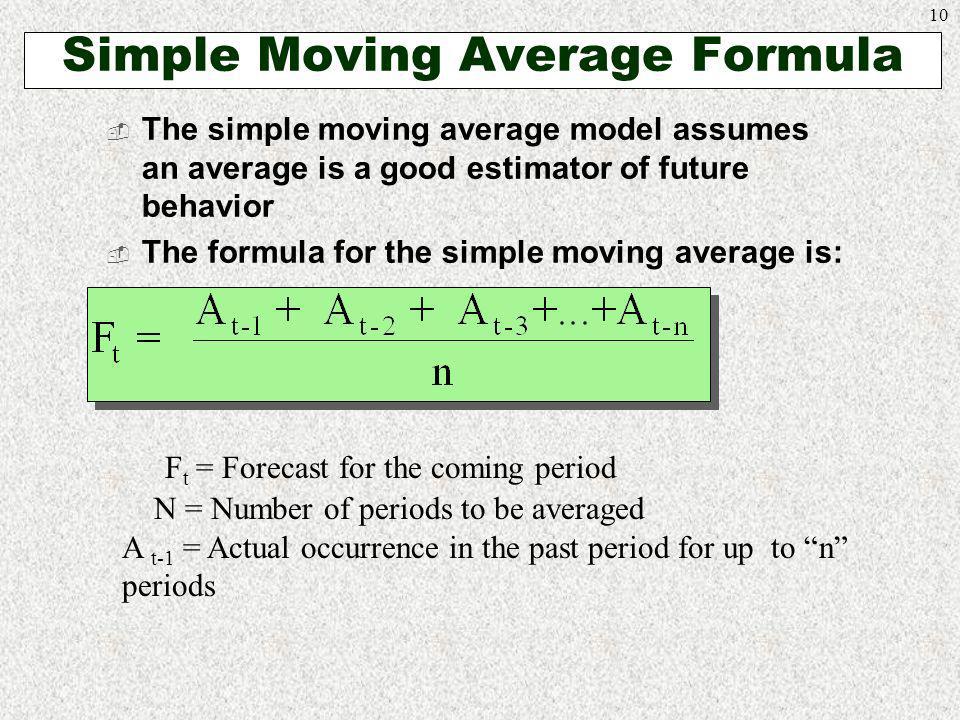 The shortest 500cc ATV is the Polaris Outlaw 71.5 inches long. The 500cc ATV class is where we see a wide range of lengths among the popular ATVs, ranging from 71.5 to 94 inches long. The width, on the other hand, is pretty consistent among 500cc ATVs, almost all falling between 47 and 48 inches wide, with the Bombardier being an outlier at 46 inches wide.
The shortest 500cc ATV is the Polaris Outlaw 71.5 inches long. The 500cc ATV class is where we see a wide range of lengths among the popular ATVs, ranging from 71.5 to 94 inches long. The width, on the other hand, is pretty consistent among 500cc ATVs, almost all falling between 47 and 48 inches wide, with the Bombardier being an outlier at 46 inches wide.
The 650cc ATV class sees less range than the 500cc ATVs. The longest machine is once again 94 inches long in the Bombardier Outlander 650 HO. That model is also the least wide at 46 inches wide. The shortest 650cc ATV is the Bombardier DS 650X, at just 77 inches long. That machine also happens to be the widest at 48 inches wide. At 650cc, most of the ATVs are 84 to 94 inches long, with the outlier Bombardier ATV at only 77 inches long. As to width, most of the machines are in the 47-48 inches range, with a couple dropping down to 46 inches wide.
700cc ATVSAmong the 700cc ATVs, there is a bit more range, from the shorter Yamaha Raptor 700R, at 72.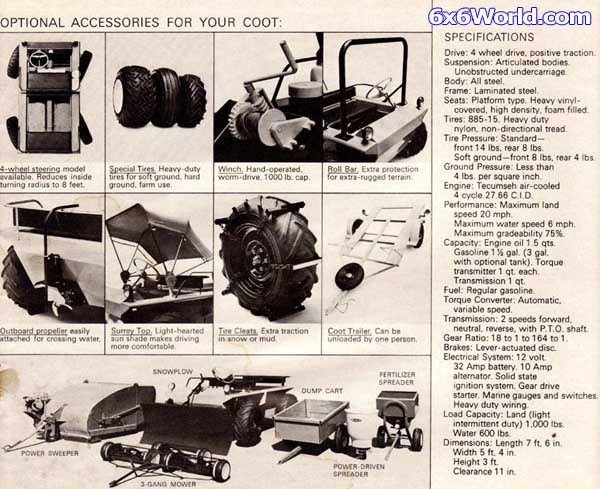 6 inches long, to the Arctic Cat 700 Diesel, at 93 inches long. The least wide model was the Yamaha Raptor 700R, at just 46.1 inches wide. The widest model was the Polaris Sportsman 700 EFI, at 48 inches wide. The length of the 700cc ATVs went from 72 to 93 inches, but most of the machines were in the 82-85 inch range. For width, all the machines were in the 46-48 inches wide range. Notably, all the Arctic Cat models came in at 47.5 inches wide.
6 inches long, to the Arctic Cat 700 Diesel, at 93 inches long. The least wide model was the Yamaha Raptor 700R, at just 46.1 inches wide. The widest model was the Polaris Sportsman 700 EFI, at 48 inches wide. The length of the 700cc ATVs went from 72 to 93 inches, but most of the machines were in the 82-85 inch range. For width, all the machines were in the 46-48 inches wide range. Notably, all the Arctic Cat models came in at 47.5 inches wide.
The 800cc class of ATVs is fairly limited and mainly limited to Bombardier and Polaris. They both have a smaller and larger model. The Bombardier Renegade 800 is 86 inches long and 46 inches wide. The Bombardier Outlander 800 is the larger model. While still 46 inches wide, the Outlander is 94 inches long. The larger Polaris is the Sportsman 800 X2, which is 93 inches long and 48 inches wide. The smaller Sportsman 800 is only 83 inches long and 48 inches wide. I would also throw the 750cc Kawasaki Brute Force into this class. It is 86.4 inches long and 46.5 inches wide. With this limited selection, you can expect 800cc ATVs to be 83 to 94 inches long and 46 to 48 inches wide. Again, there seems to be shorter and longer models without a lot in between.
It is 86.4 inches long and 46.5 inches wide. With this limited selection, you can expect 800cc ATVs to be 83 to 94 inches long and 46 to 48 inches wide. Again, there seems to be shorter and longer models without a lot in between.
The king of the class is the 1000cc ATV. As you would expect, your ATVs are going to be big at the 1000cc size. The smallest of the bunch that I found is the Arctic Cat 1000, which is 84.8 inches long and 47.5 inches wide. The biggest that I found is the Arctic Cat MudPro 1000, which is 94.5 inches long and 47.8 inches wide. The machines I found at 1000cc ranged from 84 to 95 inches long and 46 to 48 inches wide.
In this post, we’re looking at how wide, how long, and how high ATVs are. ATVs do vary quite a bit in size, often closely related to their engine size.
But by calculating an average for different engine sizes, I should be able to give you a pretty good idea of what to expect.
There are countless reasons why you need to know how big an ATV is. Making sure it fits on your trailer or truck-bed is one of them.
Regardless of your reasons, I’ve done the job of collecting and processing the data for you.
To get reliable data to work with, I looked up the spec-sheets of every big ATV brand and almost all of their models.
Due to practical reasons, I could not include all available models, but most brands are well represented.
First, here are all of the data I’ve collected, presented in a simple table form. All of the bikes listed are 2019 / 2020 models.
Collecting the dimensions of all the major brands and models of ATVs.The width is usually the most critical measurement of an ATV. But before we look into why width is so important, let’s have a closer look at the numbers:
How wide is an ATV? Most ATVs are 45 to 50 inches (114-127cm) wide. The average ATV width is 47,4 inches (122,7cm).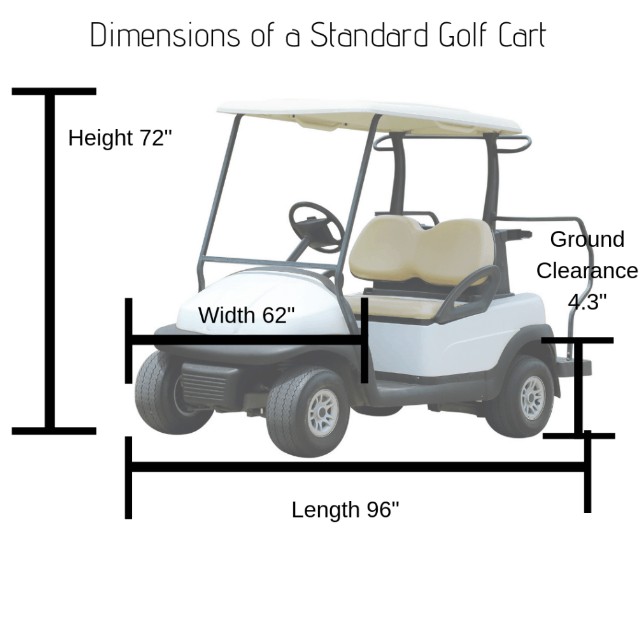 ATVs that are modified with larger wheels lift kits or wheel spacers are even wider.
ATVs that are modified with larger wheels lift kits or wheel spacers are even wider.
So if we look at the width of all major brands and all major ATVs models, we find that the average width is just over 47 inches.
To better visualize the differences in width between different ATV sizes, I’ve calculated the average width of the various engine sizes, as seen in the chart below.
Comparing the average ATV width.From the stats, we can make a few interesting observations:
If you’ve never owned an ATV before, it’s not always that easy to understand just how important the machine’s width is. Let’s have a look at a few scenarios where width does matter.
Let’s have a look at a few scenarios where width does matter.
A significant number of ATV trails do not allow you to ride machines that are more than 50 inches wide.
If you ignore the regulations and ride an ATV wider than 50 inches, you do not only risk getting fined if you get caught. You may not even fit in the first place. The gates and bridges on such trails will often be built with the 50 inch limit in mind so that wider vehicles won’t fit.
This, however, is not an issue if you ride a stock ATV. All stock ATVs you will find on the market today are 50 inches or narrower.
But the restrictions do exclude most UTV’s from riding these trails as they are typically above 50 inches wide. However, because of these regulations, more and more manufacturers are now offering even UTVs, that is just 50 inches wide.
There is not only when riding on man-made trails when width matters.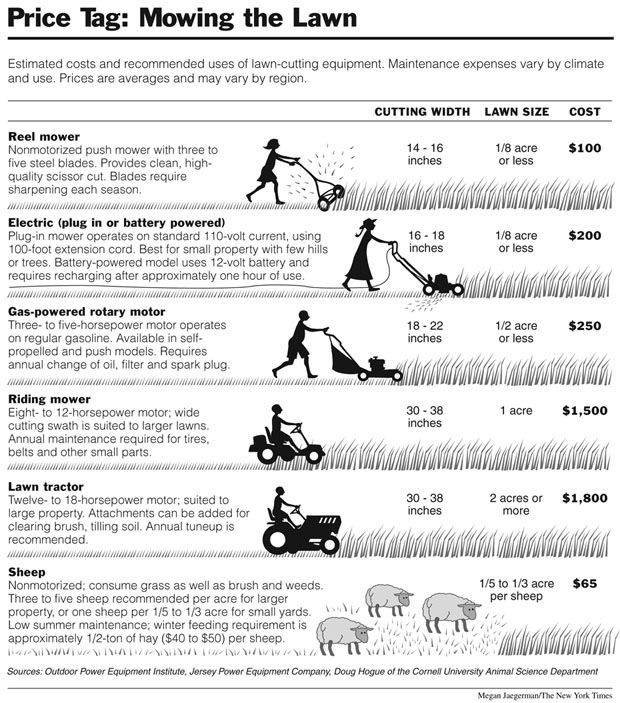 The wider your ATV is, the more likely you are to get stuck or not fit between trees and big rocks when riding in the forest.
The wider your ATV is, the more likely you are to get stuck or not fit between trees and big rocks when riding in the forest.
As soon as you start making modifications to your ATV, such as installing tracks, wheel spacers, or bigger wheels, it will become wider and may no longer fit in your trailer or truck bed.
That’s why it’s always a good idea to measure how wide of an ATV you can fit before you purchase these upgrades if you may end up having to upgrade your means of transport as well.
A wider ATV is generally more stable than a more narrow machine. If you ride sideways on steep slopes, the extra stability of a wide machine may be just what you need to prevent you from tipping.
Or, if you do ATV racing, a wider wheelbase will allow you to tackle tight corners at higher speeds than you would with a more narrow setup.
There are a few ways you can increase the width of an ATV.
Installing wheel spacers is the fastest and cheapest way to achieve a wider wheel stance. While wheel spacers are great, they do come with a few significant downsides. Read this post to learn all about the pros and cons of installing wheel spacers on an ATV.
Something called the wheel offset is used to indicate how far from the wheel hub your tires sit. You will usually find this number stamped on the inside of your rim. The value may be negative, zero, or positive.
To increase the width of an ATV, you can get rims that have a larger offset. If your stock rims are negative 5 offset, getting rims that have an offset of positive 5 will increase your ATV’s width by 20mm in total (10+10).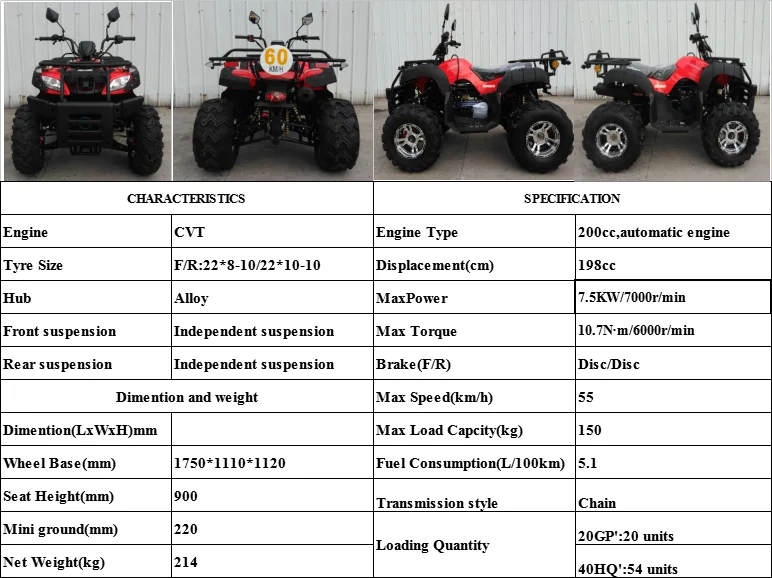
When you put bigger tires on your rims, your overall bike width will usually increase as well. Please note that increasing tire size by more than 1-2 inches will often result in rubbing issues.
To solve this, you may install wheel spacers, get rims with a different offset, or simply cut the plastic that is hitting the wheels.
A lift kit will not only make your ride higher, but it will also, in most cases, make the bike wider. This is necessary, so you don’t ruin the ride’s stability by lifting its center of gravity.
Now that you know how wide the average ATV is, how long is an ATV? Most ATVs are 80 to 85 inches (203 – 216 cm) long. The average ATV length is 82,9 inches (211 cm). Touring ATVs are typically 5 – 10 inches longer than standard models.
Again I have calculated the average length of various ATV sizes and put them in a cha chart to compare.
Comparing the average ATV length.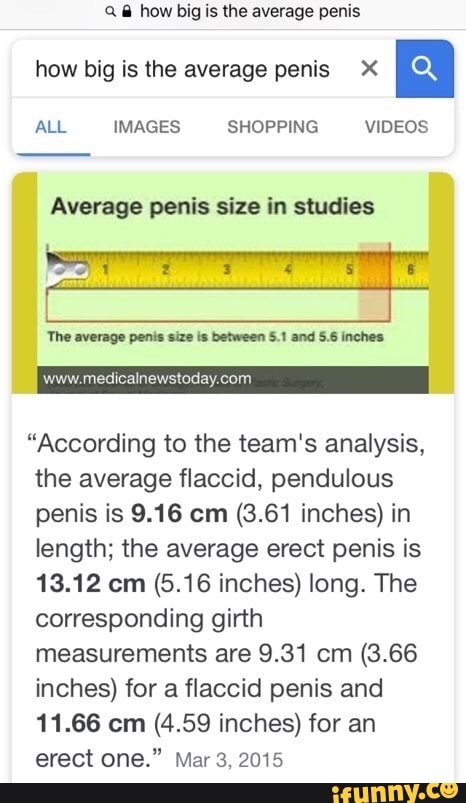
This time the results may come across as a bit more surprising.
Finally, we’ll have a look at the average ATV height.
How high is an ATV? Most ATVs are 46 to 52 inches (117 – 132 cm) high. The average ATV height is 48,9 inches (124 cm). Hi-lift models are typically 1-3 inches higher than the standard model.
Comparing the average ATV height.This time the comparison chart shows quite a different story.
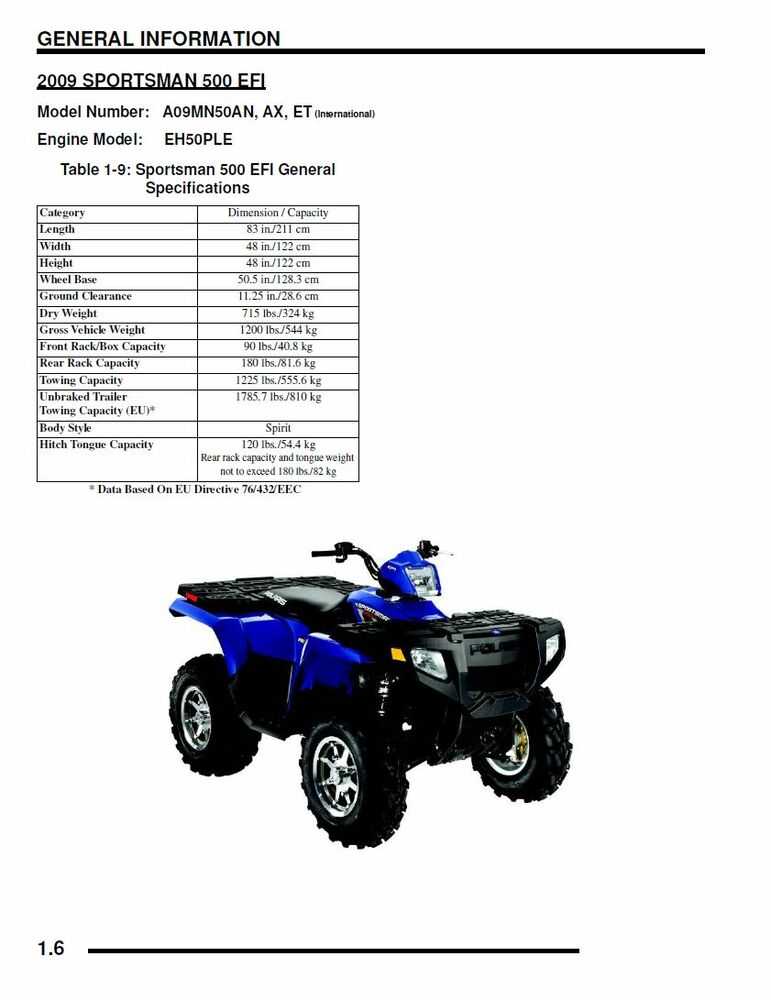
Increased height usually means better ground clearance and better off-road capabilities. The added height is also a great benefit when riding in deep mud. That’s why lift kits and larger wheels are popular upgrades for those who want to go deep mudding.
Related: In this post, I’ve listed other essential mods you can do to create the ultimate mudding machine.
A higher ride does, however, make the ATV more tippy. Stability is just as important as ground clearance if you do trail riding or utility work for the most part. The key is to find the ideal balance between height and stability for the type of riding you will be doing.
In a previous post, I have collected and compared the data on average ATV weight.
How wide is an ATV with tracks? Installing tracks to your ATV will typically increase the width by 8-10 inches. ATV width with tracks is about 56 to 60 inches (142 – 152 cm).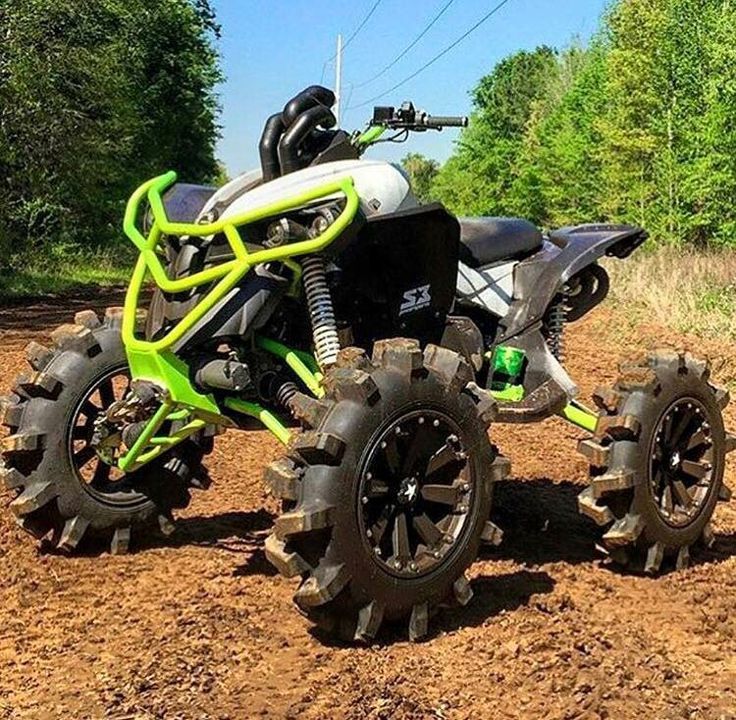
How wide is an ATV trailer? ATV trailer width varies, but they are typically just as wide as an average ATV with a width of 48 to 50 inches. Ideally, the trailer should have about the same width as the ATV pulling it.
ATV trailer width.12:37, 21 lime 2021
Transport
One of the most popular modes of transport today is rightfully a quad bike. Some people think that such equipment is nothing more than an expensive toy, so they buy off-road vehicles. However, for many, an ATV is a dream technique that, if implemented, can provide a number of benefits. nine0003
According to the established rules, you can ride a quad bike even in the city, but this requires the appropriate documents. This technique is usually used for off-road, sand, swamps, rough terrain, as well as for travel. There are no restrictions for this vehicle, which is why it is attractive. Note that you can buy an ATV in Ukraine on the website of a specialized store, which offers a wide selection. nine0003
There are no restrictions for this vehicle, which is why it is attractive. Note that you can buy an ATV in Ukraine on the website of a specialized store, which offers a wide selection. nine0003
You can use ATVs for pleasant rides with friends, fishing and hunting trips, and work in the country. Yes! Such transport is intended not only for entertainment, but also for household help.
Some people use ATVs as home helpers. Not every car is suitable for this, and if you live in a rural area or have a summer cottage and want to make your work and life easier in general, pay attention to the following indicators when buying:0003
ATVs used as household helpers are classified as utility vehicles. They are equipped with powerful motors, huge wheels with lugs. Such models have proven themselves when used in the most severe conditions. They don't "see" problems in a sea of mud and swampy terrain. Utility ATVs perform sharp descents and ascents effortlessly on the part of the driver. The main advantages of this class are an increased level of comfort and predictability. nine0003
They are equipped with powerful motors, huge wheels with lugs. Such models have proven themselves when used in the most severe conditions. They don't "see" problems in a sea of mud and swampy terrain. Utility ATVs perform sharp descents and ascents effortlessly on the part of the driver. The main advantages of this class are an increased level of comfort and predictability. nine0003
The owners of these ATVs claim that their four-wheeled "horses" outperform four-wheel drive pickups in their technical characteristics when used outside the city. Utilitarians are able to get to the most inaccessible places and drag heavy logs with them. The sale of such equipment is carried out by MotoGO, where models for children and teenagers are also presented. By the way, for the younger generation, this is the safest mode of transport, unless, of course, we are talking about driving on busy roads. nine0003
The average ATV consumes about 10 liters of fuel per hundred kilometers, but this figure can fluctuate depending on how fast you develop. The content cannot be called expensive, and the service to the peas of the country is developing quite well. This technique is reliable, which ensures its stable operation.
The content cannot be called expensive, and the service to the peas of the country is developing quite well. This technique is reliable, which ensures its stable operation.
Recently, quad bikes are experiencing a real rise in popularity in our country. A sad aphorism about Russia's two troubles comes to mind. Indeed, it would be strange if ATVs did not take root with us. The widest range of off-road gives a roam to all lovers of fast extreme driving. However, ATVs are equally good for both leisure and work. In recent years, many modifications have appeared. ATVs "learned" to ride on sand and impassable mud, on snow and ice, carry cargo and tow other vehicles. So, the ATV is suitable not only for a safari. It will perfectly fit into the rural landscape, it will be useful for lovers of fishing and hunting, it will help to manage the household, or just give a noisy company a ride with the breeze. nine0003
How different the purpose of ATVs is, just as different people want to buy them.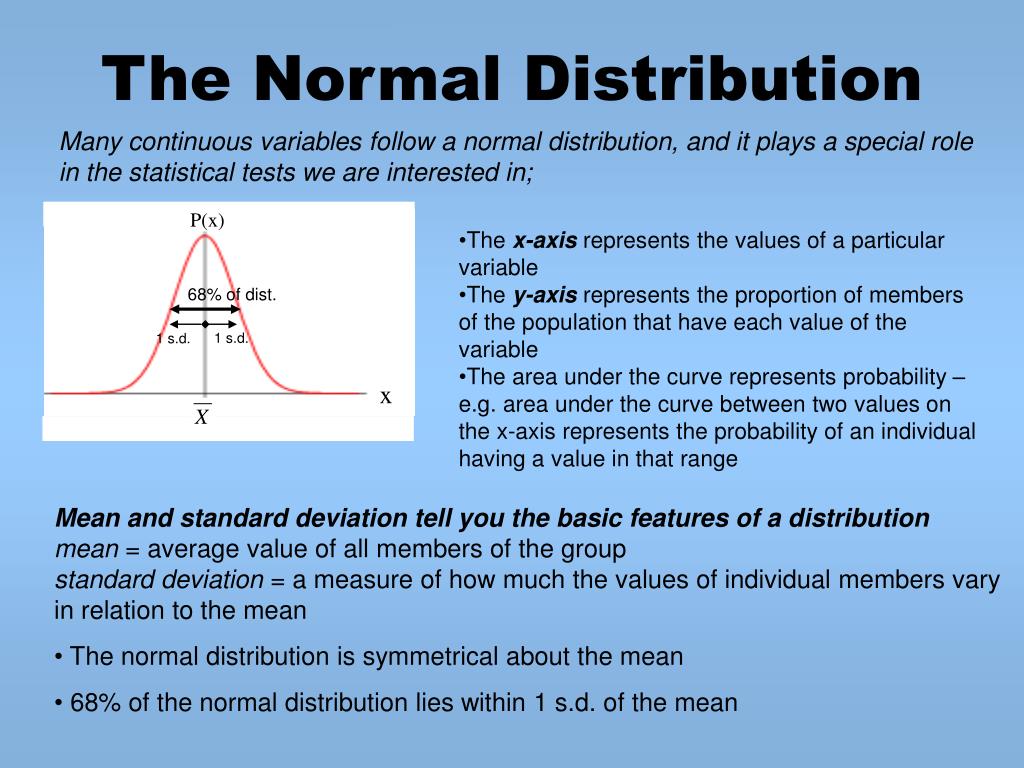 However, there is something in common - no one wants to overpay, neither for a sports entertainment model, nor for a working utilitarian one. In this regard, Chinese ATVs are most preferred. It would be unfair to doubt their quality. Allergy to Chinese things around the world is coming to naught. This is natural, because Chinese manufacturers of equipment have long come to the conclusion that without a good reputation it is impossible to ensure the demand for goods. A product that is built to last must be credible or no one will buy it. nine0045 ATVs from China are in no way inferior in quality to other imported models, but they are noticeably inferior in price, which cannot but rejoice.
However, there is something in common - no one wants to overpay, neither for a sports entertainment model, nor for a working utilitarian one. In this regard, Chinese ATVs are most preferred. It would be unfair to doubt their quality. Allergy to Chinese things around the world is coming to naught. This is natural, because Chinese manufacturers of equipment have long come to the conclusion that without a good reputation it is impossible to ensure the demand for goods. A product that is built to last must be credible or no one will buy it. nine0045 ATVs from China are in no way inferior in quality to other imported models, but they are noticeably inferior in price, which cannot but rejoice.
A variety of modifications is another plus for the Chinese. You can buy both a scorcher and a workhorse for relatively little money. Export to our country is well organized. Affordable price and a wide range of models perfectly characterize Chinese ATVs. Selling is going briskly: over the past five years, its volume has grown two and a half times.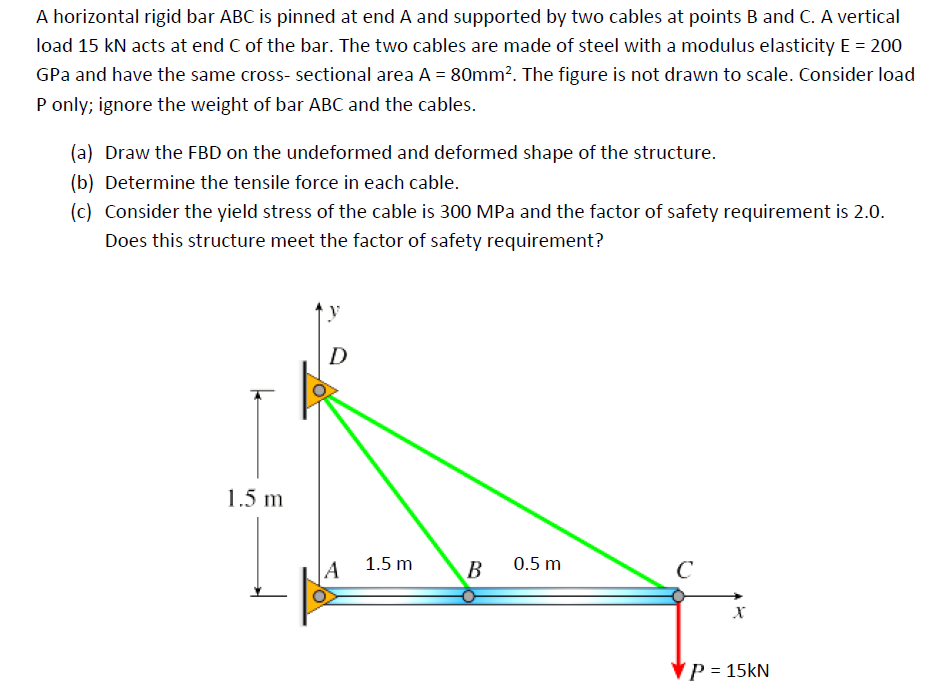 Sports Chinese ATVs are especially popular, their prices are an order of magnitude lower than those of competitors, and the technical parameters and design are no worse. So, if you want to get a reliable and nimble four-wheeled friend at an affordable price, Chinese-made ATVs will suit you completely. nine0003
Sports Chinese ATVs are especially popular, their prices are an order of magnitude lower than those of competitors, and the technical parameters and design are no worse. So, if you want to get a reliable and nimble four-wheeled friend at an affordable price, Chinese-made ATVs will suit you completely. nine0003
When choosing a model, many people pay attention to the letters atv, and believe that this is the name of a Chinese manufacturer. In fact, not only Chinese ATVs - atv, this letter combination denotes all high-traffic ATVs. The name is an abbreviation for "All Terrain Vehicles", which in English means "equipment for driving on any terrain." The ability to ride hills and sands in all weather is not all that made Chinese ATVs popular. China has never broken prices, but this is not the main reason. The secret to the steady demand for Chinese ATVs lies in their versatility. The optimal combination of quality and price - what could be more attractive? nine0003
By the way, an ATV can be a great gift.